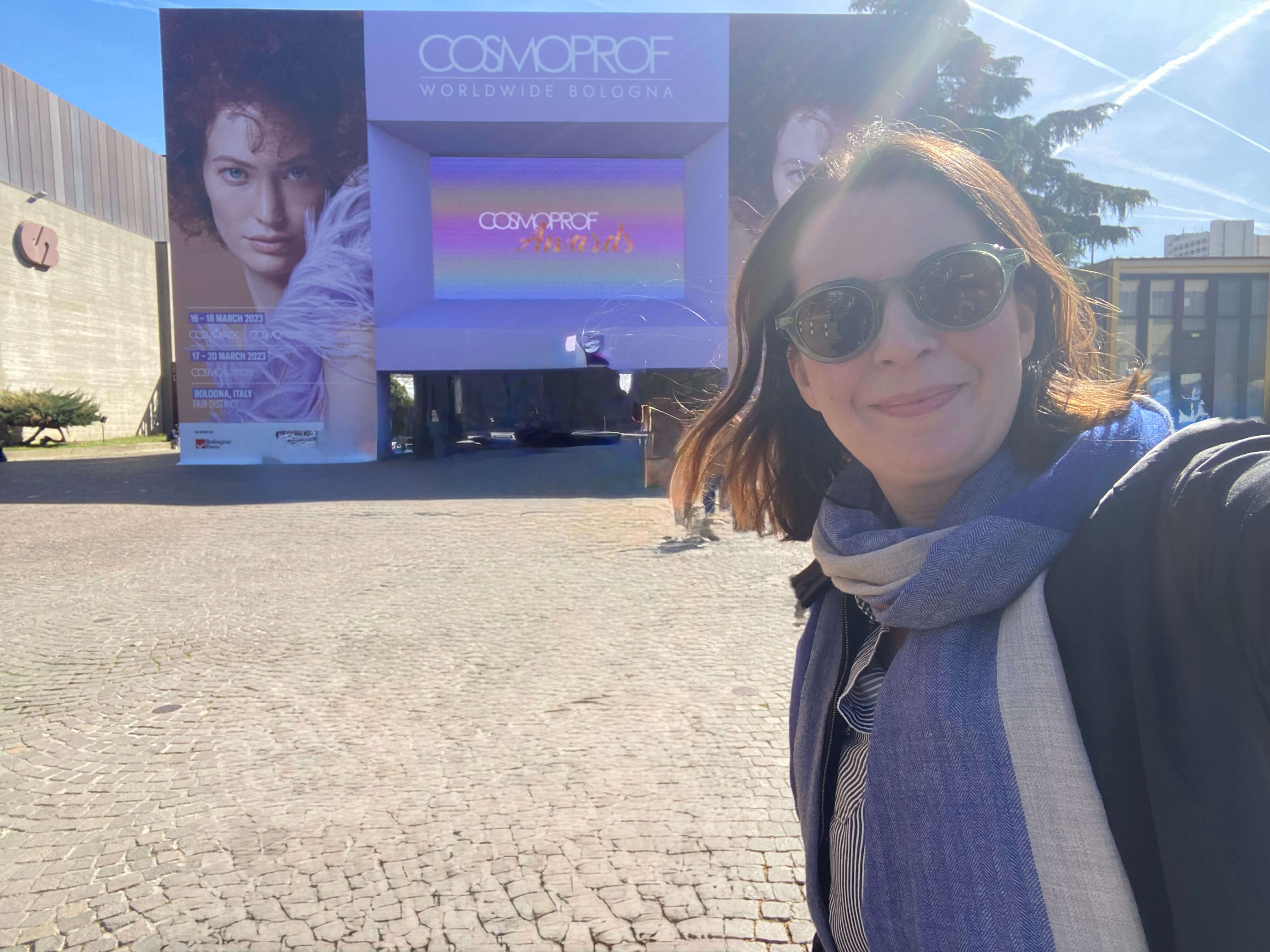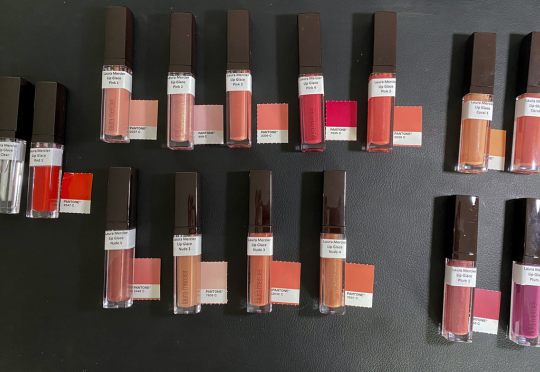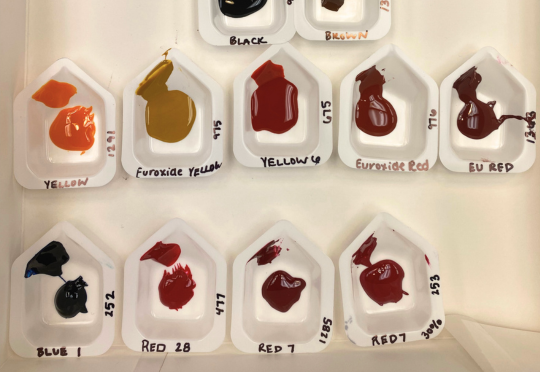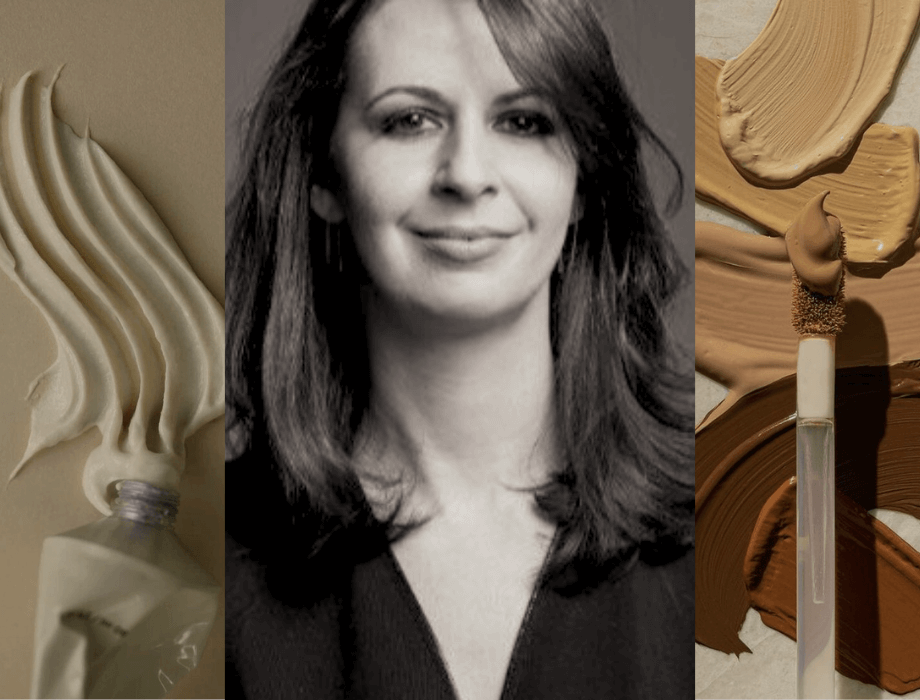Interview with Product Developer Sophie Thall
Catch us up to speed on your career
I began my career as an assistant to the Head of Marketing for a beauty strategy and development consultancy. Our clients were mostly apparel brands or fashion designers launching their own vertical beauty and fragrance lines. From the start, I was in the room with the heads of these businesses to help create products, which taught me a lot. I was really lucky to be exposed so quickly to some great leaders, mentors and brands, and I decided I wanted to create products from start to finish.

Then I moved into beauty where I led makeup, body care, and fragrance categories, as well as managed teams in-house at NARS, Laura Mercier, and Pat McGrath. For Pat, it was backstage during fashion shows where we created her first foundation and mascara lines.
At night and during weekends, I completed an MBA in order to really take a wider view of the industry, brands, and customers. I wanted to understand why certain decisions were being made, and how to help lead a team and a company forward. Most recently, I leapt into sunscreen by heading the product development team at the mission-driven Supergoop!.
There’s a lot of misconception about what a product developer does. Can you explain the role within the context of the industry?
There is! Product development can be confusing because we play a slightly different role depending on the company structure or strategy. From my perspective, product development is tasked to propose, design, develop, and launch innovative products that meet the customer where they are—and where they are going.
With respect to the initial calendar development process, a product developer proposes formulas, ingredient stories or even new product formats that land the right technology at the right time, based on our unique lens on the competitive or global landscape.
After aligning these concepts with both management and marketing, the team develops a brief for in-house Research & Development (R&D) and/or external Contract Manufacturers (CMs) that details the target consumer, claims, ingredients and texture ideas. A strong developer needs to know who the best partner is for each technology (e.g. skincare, sticks, SPF, powders, complexion) and must also account for operational considerations such as target costs, net weight, package style and launch quantities.
Finally, the PD team does whatever it takes to bring the product to the consumer on time and with the right formula. This process involves everything from panel testing across skin tones and skin types to overseeing formula stability and clinical/consumer testing.
This can only happen by working collaboratively with internal stakeholders, such as management, marketing, R&D, creative, sales/education and packaging, as well as external partners such as contract manufacturers, ingredient suppliers, and fragrance houses. It’s a really big group, which I don’t think always comes across.
What does your day-to-day look like?
What surprises many people, even the C-suite, is that it often takes 2-3 years to launch an individual product, and we are managing many products simultaneously, including reformulations of ones already on the market. A typical PD workflow for, say, Fall/Winter 2025 likely includes approving manufacturing batches for 2026 products, preparing nuanced claims and launch language with marketing and copy teams on 2027 products, and even briefing and evaluating new products for 2028!
A PD team also has to keep up with trends and innovations through competitive research and attending trade shows across the globe; just as we have to keep track of recent launches for the market’s reactions or questions. Lots going on, but that’s what makes the job interesting.
To be an expert product developer, either inside a company or an independent consultant, you need to know inside and out: your brand, the product trends, horizon formula, fragrance, and flavor innovations and ingredient technologies.

Can you break down the scenarios of how new products come to market?
Such a great question that’s also not straightforward to answer. It often depends on the product category, the way your brand operates, and the constraints you are working with (i.e. time/money/quantities/headcount).
R&D within a large company, say a L’Oreal or Shiseido, regularly presents innovations to their internal brands’ PD teams. We also review new innovations from Contract Manufacturers (CMs) throughout the year. Innovations that are presented at trade shows (not “briefed” by PD) can be chosen, too, i.e. your brand can be the first to pick up a new innovation and launch it exclusively for an agreed-to period.
Many color innovations, for example, start out this way because those innovations can rely on special equipment or processes a manufacturer has in place. The CM may have invested in expensive equipment or patented technology for an innovation entirely their own that nobody has briefed to them. For example, a specific technology for slurry eyeshadow, encapsulated pigments, bouncy cream-to-powder blush or a new liquid eyeliner delivery system
If a brand buys one of these formulas, and its exclusivity period ends, you will notice a lot of other brands will end up having very similar formulas out there on the market in the following years. This is where dupes come in: either because the innovation was successful in the market and companies copied it, or the exclusivity clause on the star formula has ended and thus, open to multiple brands to pick up. The first brand does a lot of the work to introduce that innovation to the market, and if it does well, fast-follower brands pick it up. They are banking on the fact that their customer will still be interested in this innovation, even if it's not first to market, particularly at a lower price point.
New CM innovations might also serve simply as inspiration for a PD team to co-create something totally new with that manufacturer. For example, you might ask a CM, “I really love this new innovative blush formula, I was imagining a similar texture for lip. Can the formula hold more pigment and feel more hydrating? Can it be more shiny?” Then you are creating something new, but you know the CM has the right technology to start from.
Personally, I’ve had the good luck to work at brands that invest in the time necessary to brief unique ideas, for which I’d advocate if possible. When you create something that no other brand, or CM, has done before—it’s more exciting and fresh for the customer (and us in PD). I find that’s more fun and ownable than “shopping.”
On social media, influencers often talk about “X brand came up with Y new formula” and that’s not really the case.
Yes exactly. Sometimes the formula idea comes directly from the mind of a founder, a Marketing or PD Innovation team member, an R&D chemist, or their counterparts at an external CM. Fresh ideas can come from anywhere.

On the flip side, many brands that launch formulas from a CM’s library are credited with “coming up with" a formula on social. They may have shopped the formula straight up, or tweaked it slightly with the chemist to make it more to their liking. That can be easier for a new brand with only a small team, and they might not have the quantities necessary or structure to really develop something custom yet. It’s a totally fair way to start out and many of our favorite makeup brands begin just like that and make custom shade choices to differentiate themselves as a special new brand with a unique POV (i.e. a much-needed shade range).
You see what’s coming down the pipeline. Can you spot viral products/formulas?
I’m curious how other people would answer this. Virality is often driven by marketing and social media, which I find is really into gestures. Still, if you have a product that’s surprising or shows up on screen in an interesting way, that’s part of the recipe. So is a product that makes people feel good and delivers something actually new, such as an application style, or a formula that has a unique, visible transformation.
What’s been your biggest win (in this area)?
When we launched the Skin Fetish foundation for Pat McGrath, there was really nothing more fulfilling for me than watching the models backstage gliding around, showing how lovely the finish was. The outside world was still getting over their matte, full-coverage foundation hangovers and the visible glow was such a part of her choice of formula (on top of the expert shade-matching). More recently, my team launched Protec(tint) for Supergoop! which gained a lot of attention for delivering a surprisingly beautiful skin tint formula with an SPF 50 and amazing shades. It won Allure Best of Beauty!
Can you tell what will be big in 2025 and 2026? What are the most exciting innovations in the PD space right now?
In terms of technology, there have been a lot of innovations in the ingredient delivery space—with more to come. In skincare, companies have been investing in new tech devices, routines, and even injectables that boost collagen or hydration for those looking for a low-key alternative to Botox face. Some customers are looking for a more natural look although, paradoxically, younger customers are interested in aging well earlier. I’ve noticed many suppliers address the shift in skincare expectations by developing micro-encapsulated ingredients, or controlled delivery of actives, to actually provide gentle or more affordable alternatives to surgery or fillers. Obviously rigorous testing and verifiable claims become really important here for suppliers and brands.
In a world where customers spend considerable time on screen (e.g. video calls or social media content), more attention is being given to skincare and easy WFH makeup and hair care. WGSN called out “beauty snacking” last year, and I thought that was clever. People working from home part of the week are using a hydrating face spray or lip balm in between meetings, or can even pull off wearing a hair mask during the day now, which is not really office appropriate. Simultaneously, it’s become normal for people to work from home some days—and show up at the office, or in the evenings, as a more statement version of themselves. People are looking for different products and solutions and applying products more frequently, and brands are following suit. One reason why Fragrance and Haircare have exploded across all channels, but some makeup categories like Lip also grew this year.
People are over the idea of buying something to make you feel good for 2.5 seconds. With inflation and price hikes in all spaces, a product has to be really enjoyable, do something, or feel signature or personal to you. What’s exciting is there are still so many niche or unique brands in all categories that are doing something different, so there is plenty out there to explore. There’s no lack of creativity or bravery in these newer brands.

What was the takeaway of the 2025 state of the beauty industry?
A lot of brands are struggling. After nearly 20 years in this industry (😯), this unease is actually new to me. I know that tech, fashion, media, real estate and the art world have also been through a big consolidation, so we are not alone. But beauty always seemed more stable.
There have been layoffs up and down the chain with both big and small brands reorganizing. For some of the biggest players, crucial business in the China market was obliterated during the pandemic, while for mid-sized brands, a series of uncomfortable, misaligned acquisitions (and a lack of anticipated acquisitions) have hit hard. I would not be surprised if many of the unique, smaller DTC brands of the last 5-10 years will go big or go home, while the more established brands rethink themselves and who their customer (or retail channel) actually is.
Political events like MOCRA and recent tariffs are putting extra pressure on the industry, which means even successful, profitable brands have to ensure they have the right teams in place to produce things worth paying for—high quality products that make you feel something. MOCRA is Modernization of Cosmetics Regulation Act of 2022, which “is the most significant expansion of FDA’s authority to regulate cosmetics since the Federal Food, Drug, and Cosmetic (FD&C) Act was passed in 1938,” says the FDA. CMs are also going to be affected by MOCRA and relationships are going to matter even more. It’s always a good thing to have more oversight, but the pressure is now on.
Brands that invested in innovation and building a fun and enjoyable presence (aka cool sh*t) with the right pricing can win in this environment. Honestly, it’s quite a time to be alive during the great reshuffle. Grab the popcorn!
Why does all of this matter?
We’ve all seen how much customers want to understand what’s in their product—if it’s worth the price, how it’s made and if it does what it claims to do. This is happening in parallel to a wider cultural backlash of a growing lack-of-trust in brands and experts. Can you blame anyone with all we see going on with brands and companies right now? A lot of products are being marketed as “doing everything for everyone,” because brands don’t want to leave any money on the table. It’s so confusing.
As a response there are so many influencers, chemists, dermatologists/skinfluencers, and brands themselves trying to answer this need for factual information—some of them are really helpful, or transparently trying to uncover ‘the truth’ themselves. Some don't really hit the mark, or sadly, spread false ideas that amplify anxiety about products or ingredients just for attention.
It’s a moment where a platform like beautíMod is going to be extremely useful. As industry players with real-life expertise, we have connections to the actual experts to trust, and we’re also beauty junkies who are picky about products. Also, selfishly, it’s a supportive community and resource to where I can point myself and my clients.
What are your thoughts? Add a comment to start the conversation and don't forget to follow us @beautíMod and join our newsletter list to stay up to date on all the exciting content and conversations we have in store for you.


.png)

%20.png)
%20-%20tariff.png)


Comments (0)